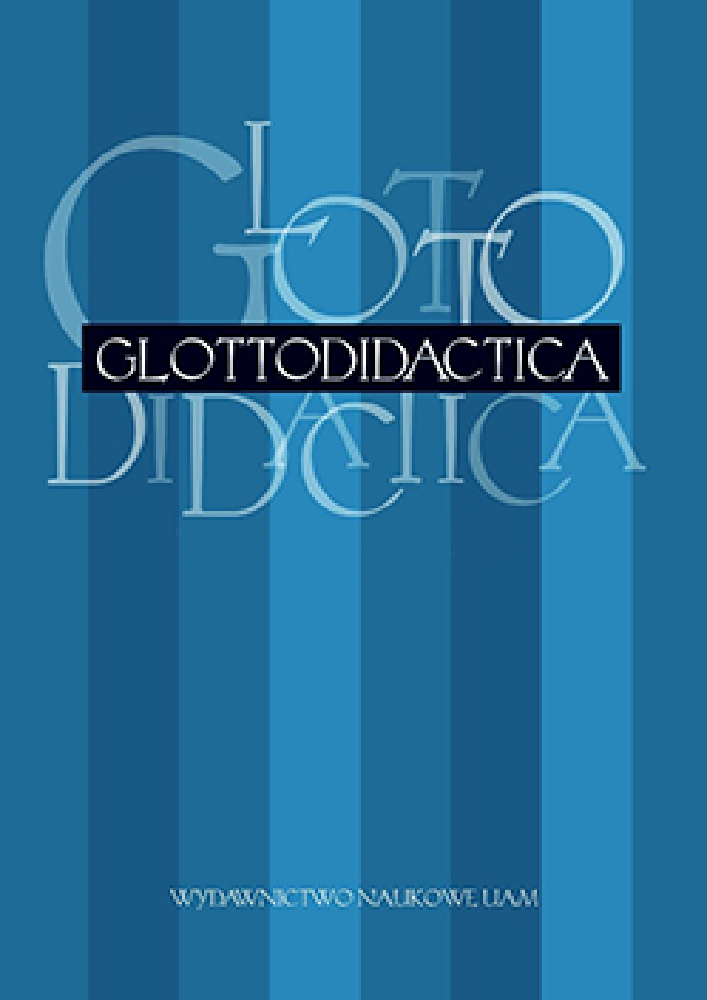Abstract
The paper provides a brief summary of what CLIL is and why it is regarded as a mainstream
pedagogical approach today. The paper’s aim is to state the significance of language within
Zydatiß’ modified version of 4Cs framework of CLIL and to recommend the re-modified 4Cs
framework of CLIL. The paper further stresses the importance of pronunciation for communication
focusing on intelligibility as a necessary linguistic category arguing that intelligibility should become an essential part of communication within CLIL. The paper also lists the important implications for the further proceedings in this direction.
Literaturhinweise
Alonso, E, Grisaleña, J., Campo, A. 2008. Plurilingual Education in Secondary Schools: Analysis of Results. In: International CLIL Research Journal 1, 36-49. http://www.icrj.eu/11/article3.html (date of access 01.12.2016).
Ball, P., Kelly, K., Clegg, J. 2015. Putting CLIL into Practice. Oxford, UK: Oxford University Press.
Breidbach, S., Viebrock, B. 2013. CLIL: Complementing or Compromising Foreign Language Teaching? Effects and Perspectives of Education Policy Plans. In: Breidbach, S., Viebrock, B. (eds). Content and Language Integrated Learning (CLIL) in Europe. Frankfurt: Peter Lang, 11–25.
Coyle, D., Hood, P., Marsh, D. 2010. CLIL: Content and Language Integrated Learning. Cambridge, UK: Cambridge University Press.
Dakowska, M. 2005. Teaching English as a Foreign Language: A Guide for Professionals. Warsaw: Wydawnictwo Naukowe PWN.
Dalton-Puffer, C. 2008. Outcomes and processes in Content and Language Integrated Learning (CLIL): current research from Europe. In: Delanoy, W., Volkmann, L. (eds). Future Perspectives for English Language Teaching. Heidelberg: Carl Winter, 139–157.
Dalton-Puffer, C., Smit, U. 2007. Introduction. In Dalton Puffer, C., Smit, U. (eds.). Empirical Perspectives on CLIL Classroom Discourse. Franktfurt. Vienna: Peter Lang, 7–23.
Derwing, T.M., Munro, M.J. 1997. Accent, intelligibility, and comprehensibility: Evidence from four L1s. Studies in Second Language Acquisition, 19, 1–16.
Derwing, T.M., Munro, M.J. 2009. Putting accent in its place: Rethinking obstacles to communication. In: Language Teaching, 42, 2, 476–490.
Edwards, J. 2013. Bilingualism and Multilingualism: Some Central Concepts. In: Ritchie, W., Bhatia. T.K. (eds). The Handbook of Bilingualism and Multilingualism. Chichester, UK: Blackwell Publishing, 5–25.
Gilbert, J. 2010. Pronunciation as orphan: What can be done? In: As We Speak, TESOL SPLIS Newsletter. http://cup.es/other_files/downloads/esl/clearspeech/orphan.pdf (date of access 01.11.2016).
Henderson, A. 2004. Takes Two to Tango: Research into Accent, Comprehensibility and Intelligibility and the Implications for CLIL. In: Szubko-Sitarek, W., Lukasz, S., Stalmaszczyk, P. (eds). Language Learning, Discourse and Communication. Switzerland: Springer International Publishing, 63–80.
Jenkins, J. 2000. The Phonology of English as an International Language. Oxford, England: Oxford University Press.
Jenkins, J. 2009. (Un)pleasant? (In)correct? (Un)intelligible? ELF Speakers’ Perceptions of Their Accents. In: Mauranen, A., Ranta, E. English as a Lingua Franca: Studies and Findings. Newcastle upon Tyne, UK: Cambridge University Press, 10–37.
Larsen-Freeman, D. 2000. Techniques and Principles in Language Teaching. Oxford, UK: Oxford University Press.
Levis, J. 2007. Guidelines for Promoting Intelligibility. Presentation at International TESOL Convention in Seattle. Powerpoint file. jlevis.public.iastate.edu/intelligibility.ppt (date of access 01.12.2016)
Levis, J. 2011. Assessing speech intelligibility: Experts listen to two students. In: J. Levis, K. LeVelle. (eds). Proceedings of the 2nd Pronunciation in Second Language Learning and Teaching Conference. Ames, IA: Iowa State University, 56–69.
Marsh D. 2012. Content and Language Integrated Learning (CLIL). A Development Trajectory.
Cordoba: University of Cordoba, Servicio de Publicaciones.
Mehisto, P., Marsh, D., Frigols, M.J. 2008. Uncovering CLIL: Content and Language Integrated Learning in Bilingual and Multilingual Education. London: Macmillan Education.
Montalto, S.A., Walter, L., Theodorou, M., Chrysanthou, M. 2016. The CLIL Guidebook. http://languages.dk/clil4u/#Guidebook (date of access 01.11.2016).
Munro, M., Derwing, T. 1999. Foreign Accent, Comprehensibility, and Intelligibility in the Speech of Second Language Learners. In: Language Learning: A Journal of Research in Language Studies, 49, 285–310.
Papaja, K. 2014. Focus on CLIL: A Qualitative Evaluation of Content and Language Integrated Learning (CLIL) in Polish Secondary Education. Newcastle upon Tyne, UK: Cambridge Scholars Publishing.
Richards, C.J., Rodgers, S.T. 2001. Approaches and Methods in Language Teaching. New York, NY: Cambridge University Press.
Setter, J., Jenkins, J. 2005. State-of-the-Art Review Article. In: Language Teaching, 38, 1, 1–17.
Zydatiß, W. 2007. Bilingualer Fachunterricht in Deutschland: eine Bilanz. In: Fremdsprachen Lehren und Lernen, 36, 8–25.
Lizenz
Authors
Authors of texts accepted for publication in Glottodidactica are required to complete, sign and return to the editor's office the Agreement for granting a royalty-free license to works with a commitment to grant a CC sub-license.
Under the agreement, the authors of texts published in Glottodidactica grant the Adam Mickiewicz University in Poznań a non-exclusive, royalty-free license and authorize the use of Attribution-NoDerivatives 4.0 International (CC BY-ND 4.0) Creative Commons sub-license.
The authors retain the right to continue the free disposal of the work.
Users
Interested Internet users are entitled to use works published in Glottodidactica since 2016, under the following conditions:
- attribution - obligation to provide, together with the distributed work, information about the authorship, title, source (link to the original work, DOI) and the license itself.
- no derivatives - the work must be preserved in its original form, without the author's consent it is not possible to distribute the modified work, such as translations, publications, etc.
Copyrights are reserved for all texts published before 2016.
Miscellaneous
Adam Mickiewicz University in Poznań retains the right to magazines as a whole (layout, graphic form, title, cover design, logo etc.).




